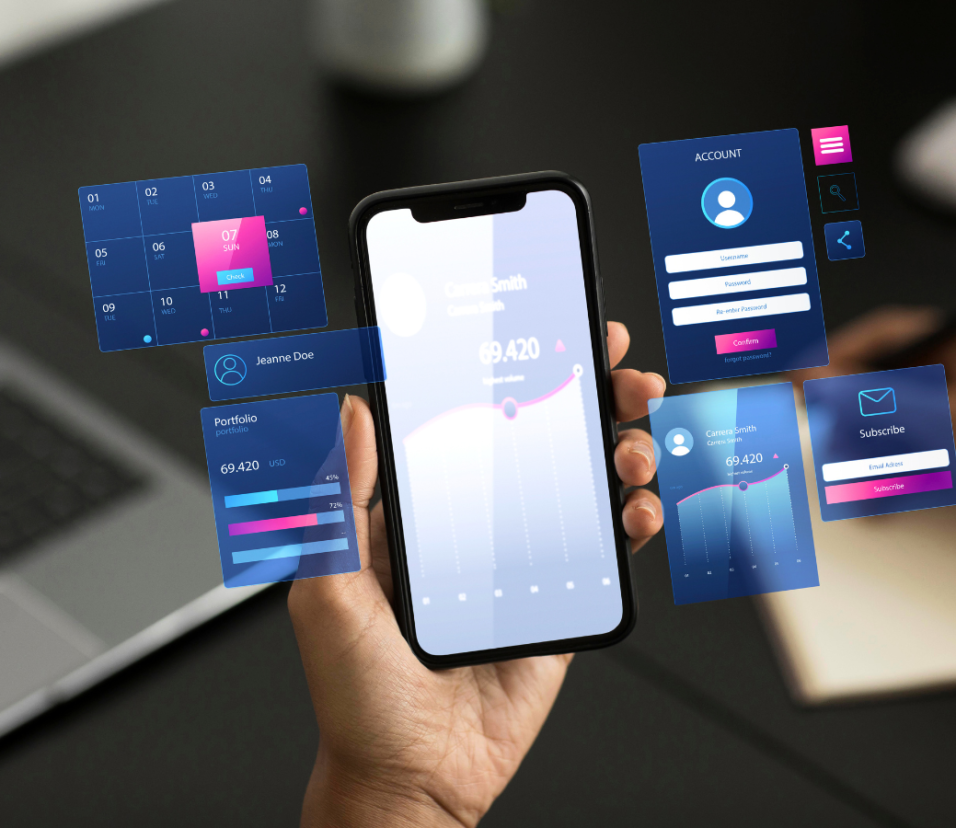First Impressions Matter: The Psychology Of Website Design
In the vast and ever-evolving digital landscape, a website is often the first point of contact between a business and its audience. It’s not just a virtual storefront; it’s a powerful tool for communication, engagement, and conversion. However, what separates an effective website from the rest isn’t just its aesthetics or functionality—it’s the deep understanding of human psychology woven into its design. Let’s delve into how psychology influences website design and why it’s crucial for businesses today.
The Psychology of Perception
Humans are visual creatures, and our brains are wired to process visual information rapidly. When users land on a website, their first impressions are formed within milliseconds. This phenomenon underscores the importance of visual elements such as color, imagery, and layout in shaping user perceptions.
Color Psychology: Harnessing Emotions
| Color | Associations |
|---|---|
| Blue | Trust, professionalism |
| Green | Growth, health, nature |
| Red | Excitement, urgency, passion |
Different colors evoke different emotions and associations. For example, blue is often associated with trust, reliability, and professionalism, making it a popular choice for corporate websites and financial institutions. Green symbolizes growth, health, and nature, making it suitable for eco-friendly brands or wellness websites. On the other hand, red is known to evoke feelings of excitement, urgency, and passion, making it effective for calls to action or promotions.
Imagery and Emotion: Tapping into the Subconscious
Images have the ability to evoke emotions and tell stories in ways that words alone cannot. By carefully selecting and positioning imagery, designers can create emotional connections with users, fostering engagement and empathy.
Images can convey emotions, tell stories, and evoke memories in ways that words alone cannot. For example, a picture of a smiling customer enjoying a product can evoke feelings of happiness, satisfaction, and trust. Similarly, images of beautiful landscapes or exotic destinations can stir up feelings of wanderlust and adventure. By strategically incorporating imagery that resonates with their target audience, businesses can create a more immersive and emotionally engaging web experience.
User Experience: The Key to Engagement

User experience (UX) design focuses on creating intuitive and seamless interactions between users and websites. By aligning design elements with users’ needs, preferences, and behaviors, businesses can enhance engagement and drive conversions.
Navigation: Guiding Users Effectively
Clear and intuitive navigation is essential for helping users find what they need quickly and easily. By simplifying menu structures, providing descriptive labels, and minimizing clutter, designers can streamline the user journey and reduce friction.
When it comes to website navigation, simplicity is key. Users should be able to find what they’re looking for quickly and easily, without having to think too hard or click through multiple pages. This can be achieved by organizing content logically, using descriptive labels and categories, and providing clear calls to action. Additionally, designers should ensure that navigation menus are consistent across all pages and devices, making it easy for users to navigate the site regardless of their location or device.
Mobile Responsiveness: Meeting Users Where They Are
With the proliferation of smartphones and tablets, ensuring mobile responsiveness is non-negotiable. A website that adapts seamlessly to different screen sizes and devices not only improves user experience but also enhances credibility and trust.
In today’s mobile-centric world, it’s essential for websites to be responsive and mobile-friendly. This means that the layout and content of the website should automatically adjust to fit the screen size and resolution of the device being used. Responsive design not only improves user experience but also enhances SEO performance, as Google considers mobile-friendliness as a ranking factor.
Building Trust and Credibility
In the digital realm, trust is a currency that can make or break a business. Design elements play a crucial role in building trust and credibility with users.
Social Proof: Leveraging Peer Influence
Testimonials, reviews, and social media endorsements serve as powerful forms of social proof, reassuring users of a business’s reliability and reputation. By prominently featuring social proof on their websites, businesses can instill confidence and encourage conversions.
Social proof is a psychological phenomenon where people assume the actions of others in an attempt to reflect correct behavior in a given situation. In the context of website design, social proof can take many forms, including customer testimonials, online reviews, social media endorsements, and user-generated content. By showcasing positive feedback and experiences from satisfied customers, businesses can leverage social proof to build trust and credibility with prospective customers, thereby increasing conversion rates and sales.
Security Signals: Establishing Trustworthiness
In an era of cybersecurity threats and data breaches, users are understandably cautious when sharing personal information online. Incorporating trust signals such as SSL certificates, secure payment gateways, and privacy policies helps reassure users of a website’s security and reliability.
Security is a top concern for online consumers, particularly when it comes to sharing sensitive information such as credit card numbers or personal details. Therefore, it’s essential for businesses to prioritize website security and reassure users that their data is safe and protected. This can be achieved by implementing HTTPS encryption, displaying trust seals and security badges, using secure payment gateways, and clearly communicating privacy policies and data protection measures.

Revolutionize Your Online Experience
In the digital age, where attention spans are fleeting and competition is fierce, the psychology of website design can be the difference between success and obscurity. By understanding the nuances of human behavior and incorporating psychological principles into their design strategies, businesses can create websites that captivate, engage, and convert users effectively. Whether it’s through visual storytelling, intuitive navigation, or building trust through social proof, the intersection of design and psychology holds immense potential for businesses seeking to leave a lasting impression in the digital realm.
Ready to elevate your online presence with psychology-driven website design? Subscribe Scraptember Shots today and discover compelling digital experiences that resonate with your audience and drive results.







Leave feedback about this